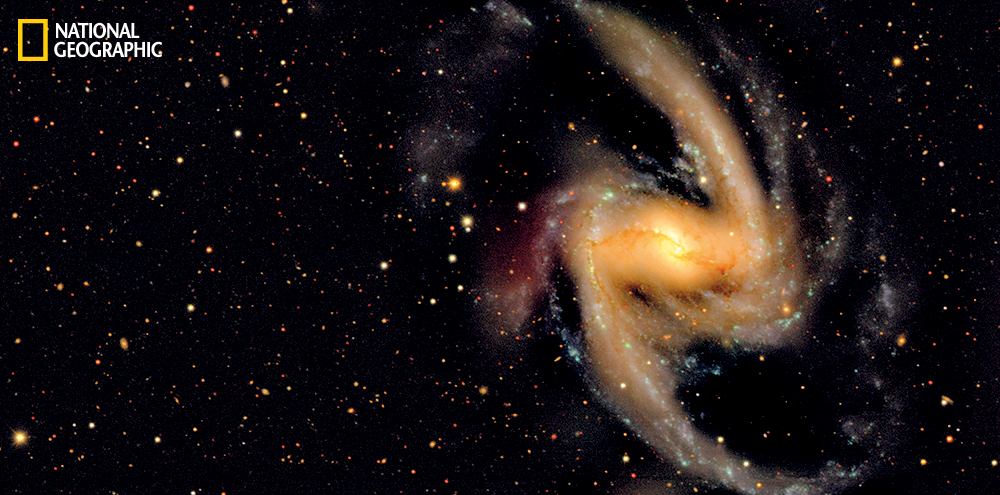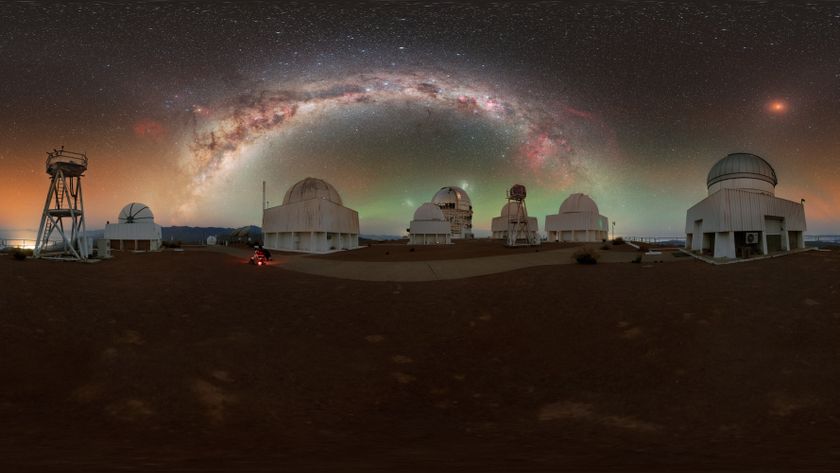
National Geographic: First Glimpse of the Hidden Cosmos

These images appeared in the January 2015 issue of National Geographic magazine. Ferris contributed these responses to Space.com's Expert Voices: Op-Ed & Insights.
In conjunction with the release of National Geographic's January 2015 issue of its magazine, Timothy Ferris discusses the hunt for dark matter and dark energy in this Q+A tied to his feature "A First Glimpse of the Hidden Cosmos"from that issue.
Space.com: Why do dark matter and dark energy so easily capture the imagination?
Ferris: The human mind is attracted to seemingly significant questions that might plausibly be answered in the near future — within, say, a decade or a generation from now. Dark matter and dark energy certainly seem significant: Scientists estimate that they amount to 95 percent of all the matter and energy in the observable universe. And they might be solvable within a reasonable amount of time. So they're more intriguing than relatively intractable mysteries like, "What is time?," or "What existed prior to the big bang?"

Space.com: For something so elusive, we seem to know quite a bit about the influence of dark matter and dark energy. What are the biggest gaps in knowledge?
Ferris: Little is known about dark matter and dark energy except for their influence on the stuff that we can perceive.
Dark matter interacts gravitationally with observable matter. Astronomers studying the dynamics of galaxies and clusters of galaxies find that they contain much stronger gravitational fields than could have been generated by the glowing stars and nebulae that are seen there. They call this unknown substance matter because it generates gravitational force, and dark since it emits no light. Other than gravitationally, dark matter interacts little if at all with the visible elements of the universe. Scientists imagine that dark matter will turn out to be one or more of the exotic, but as yet unconfirmed, materials envisioned by supersymmetry and other advanced physics theories. But one can imagine a great deal. It remains for experiments to see whether such hypotheses apply in the real world.
Get the Space.com Newsletter
Breaking space news, the latest updates on rocket launches, skywatching events and more!
Dark energy is even more mysterious. The term refers to whatever it is that is causing the cosmic expansion rate to accelerate. So you could say that dark matter is nothing but a gap in human knowledge — a name tag pasted on a gap. If dark energy is a property of space itself, a quantum theory of the vacuum may be required before researchers can make sense of it. Such an account is often called a quantum theory of gravity, since Einstein's general relativity depicts gravitation as due to curvatures in space.

Space.com: What research into these phenomena seem to be the most promising?
Ferris: About a dozen dark-matter detectors are currently operating at various locations around the world. Either they will detect dark matter or they won't. In either case they will add to the sum of human knowledge. As Thomas Edison used to say, there's great value in learning what doesn't work.
Current research into dark energy consists mainly of observations aimed at refining measurements of how rapidly the universe is expanding and for how long the expansion rate has been accelerating. If you haven't yet identified the beast in the woods at least you can measure its footprints.

Space.com: Dark matter and dark energy have had a profound impact on the evolution of our universe, something well illustrated in your article's "timeline" — can you explain the deep history of that influence?
Ferris: Dark matter did the lion's share of work in assembling galaxies and creating the large-scale cosmic structures observed today. Were it not for dark matter, the universe would look quite different today. It might not even be inhabitable.
Dark energy appears to be a property of space, and may have been responsible for the rapid initial expansion of space without which our universe wouldn't be here at all. Its current acceleration certainly influences the future of the cosmos, although the nature of that influence cannot accurately be predicted until scientists understand what dark energy is and how it behaves. If dark energy is the same field or set of fields that got the universe expanding in the first place, you could say that our universe owes its existence to dark energy.
The observable universe consists almost entirely of space. Even stars, planets and human beings are mostly space: Take away the space inside each atom and molecule and each of us could fit ourselves into a pocket pillbox. So if dark energy is indeed a property of space, understanding it would be important in the sense that one cannot understand rain, snow and steam without knowing what water is.

Space.com: What is the future for the search for the universe's most mysterious, and yet influential, components?
Ferris: A candidate dark-matter particle may be found in the near future. A few experimenters think they've already seen evidence of it. But there may be more than one variety of dark matter. We'll see.
Coming to grips with dark energy looks like both a longer haul and a bigger potential payoff. Several major avenues in theoretical physics, from the familiar "standard model" to exotica like string theory, strongly suggest that there is a great deal more to the universe than meets the eye. The path to glimpsing just how strange and extensive nature really is may lie through investigations of dark energy.
Follow all of the Expert Voices issues and debates — and become part of the discussion — on Facebook, Twitter and Google+. The views expressed are those of the author and do not necessarily reflect the views of the publisher. This version of the article was originally published on Space.com.
Join our Space Forums to keep talking space on the latest missions, night sky and more! And if you have a news tip, correction or comment, let us know at: community@space.com.

Space.com is the premier source of space exploration, innovation and astronomy news, chronicling (and celebrating) humanity's ongoing expansion across the final frontier. Originally founded in 1999, Space.com is, and always has been, the passion of writers and editors who are space fans and also trained journalists. Our current news team consists of Editor-in-Chief Tariq Malik; Editor Hanneke Weitering, Senior Space Writer Mike Wall; Senior Writer Meghan Bartels; Senior Writer Chelsea Gohd, Senior Writer Tereza Pultarova and Staff Writer Alexander Cox, focusing on e-commerce. Senior Producer Steve Spaleta oversees our space videos, with Diana Whitcroft as our Social Media Editor.










